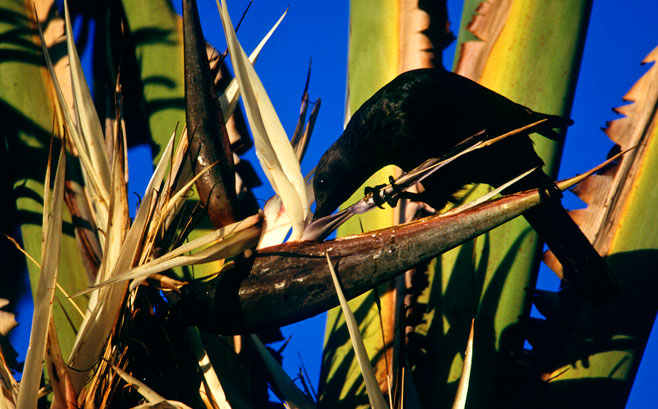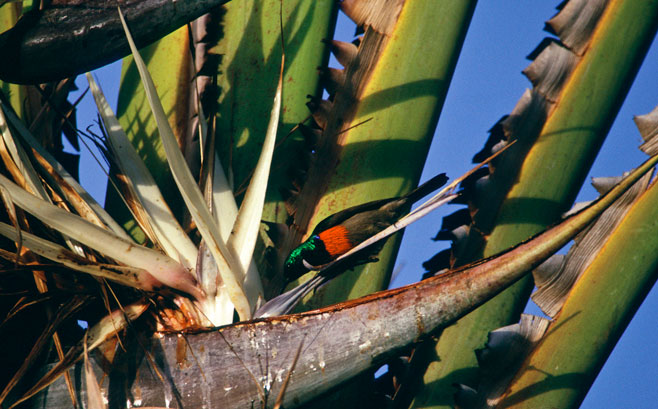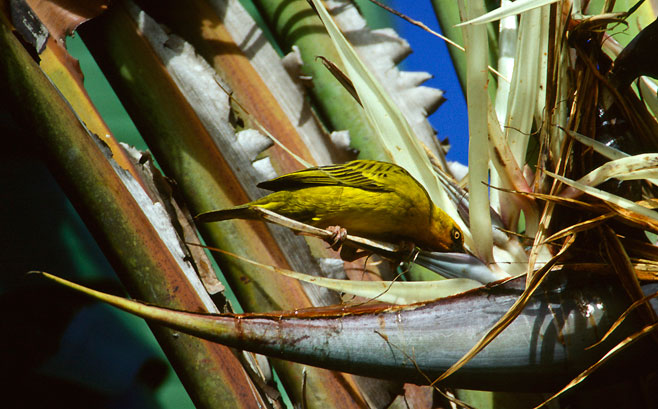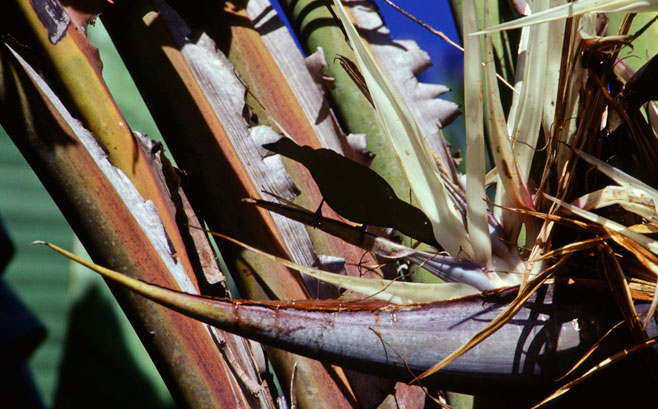Strelitzia alba (Cape strelitzia) Life
> eukaryotes >
Archaeoplastida >
Chloroplastida
>
Charophyta > Streptophytina > Plantae (land plants)
> Tracheophyta (vascular plants) > Euphyllophyta > Lignophyta (woody plants)
> Spermatophyta (seed plants) > Angiospermae (flowering
plants) > Monocotyledons > Order: Zingiberales
> Family: Strelitziaceae > Genus:
Strelitzia
 |
|
A Male red-winged starling,
Onychognathus morio,
taking nectar from a flower of Strelitzia alba on the Garden Route,
Western Cape, South Africa. [photo
Colin Paterson-Jones ©] |
 |
|
A male Greater double-collared sunbird (Cinnyris
afer) taking nectar from a flower of Strelitzia alba on
the Garden Route, Western Cape, South Africa. [photo
Colin Paterson-Jones ©] |
 |
|
A male Cape Weaver (Ploceus
capensis) taking nectar from a flower of Strelitzia alba
on the Garden Route, Western Cape, South Africa. [photo
Colin Paterson-Jones ©] |
 |
|
A male Amethyst Sunbird (Chalcomitra
amethystina) taking nectar from a flower of Strelitzia alba
on the Garden Route, Western Cape, South Africa. [photo
Colin Paterson-Jones ©] |
Identification
A large tree-like strelitzia, growing to 10 m
tall.
Of the three tree-like strelitzias found in
southern Africa, Strelitzia alba is distinguished by having
white, not blue, petals (however, occasionally white in
Strelitzia nicolai) and by having a simple flowerhead, not
compound (one flowerhead arising from another) as in Strelitzia
nicolai. Note that it is the arrow-like structure of a
Strelitzia flower that consists of two petals (with style and
stamens running between) while the three large, erect, showy
petal-like structures are actually sepals - these sepals are white
in all three species of tree-like strelitzias. There is a third
petal that is inconspicuous.
The fruit is a 3-lobed woody capsule. The seed
is black with a yellowish woolly aril.
Distribution and habitat
Its native distribution is confined to
evergreen forests in the region from the Knysna district in the
Western Cape through to the Humansdorp district in the Eastern Cape.
Phenology
Can flower at any time of year, but mainly from
July to December.
Fruit can also be present on the plant at any
time of year, but mainly from October to February.
Ecological interactions
- Pollinated by, and a source of nectar for:
- starlings
- sunbirds
- weavers
References
- Palgrave, K.C. and Palgrave, M.C. 2002. Trees of Southern Africa.
3rd Edition. Struik Publishers, Cape Town.
- Palmer, E. and Pitman, N. 1972. Trees of Southern Africa covering all
known indigenous species in the Republic of South Africa, South-West Africa,
Botswana, Lesotho and Swaziland. Volume 1. A.A. Balkema, Cape
Town.
|
